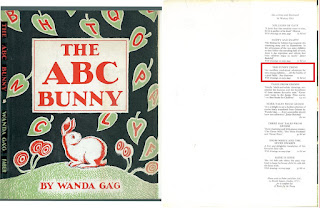You might think that because The Letters of Sylvia Plath has more than 4,300 footnotes it would be hard to pick a favorite. But you would be wrong. One of my favorite footnotes falls in Volume 2, late in the book.
In her 20 November 1962 letter to Olive Higgins Prouty, Plath writes still not knowing if she would be getting the flat at 23 Fitzroy Road, London. The letter breathlessly recaps, among other things, her 5-7 November visit to London when she found the flat and talks about all its advantages: "right round the corner from my old panel of wonderful doctors & the park & minutes by bus from the BBC" (910).
But the part that had me most allured when I transcribed, proofed, edited, and annotated came somewhat towards the end of the letter when Plath talks about her reviews of children's books. She enclosed a clipping of one from the New Statesman which the periodical titled "Oregonian Original" (9 November 1962, p.660).
"Oregonian Original" discusses nine books in total: E. S. Bradburne, Opal Whiteley; Evan Hunter [Ed McBain], The Wonderful Button; Leo Lionni, Little Blue and Little Yellow; and Elizabeth Rose and Gerald Rose, Punch and Judy Carry On; Tomi Ungerer, The Mellops Go Flying; H. E. Bates, Achilles the Donkey; Dr Seuss, Horton Hatches the Egg; Gaby Baldner, The Penguins of Penguin Town; and Reinhard Herrman, The Creation. Plath provided the stars at the top left and bottom right; Prouty annotated the clipping in pencil: "Would like to know more about the introduction". Prouty also underlined in pencil the words "splendid" and "curious" in the first paragraph. There is a pencil doodle beside the review of Punch and Judy Carry On and underlining, in pen, next to Horton Hatches the Egg.
This is nifty information, but still not what I want to highlight. No, it is just after this when in the letter Plath types, "My children's reviews are beginning to 'take'---Faber & Faber quoted one in an advertisement & I opened one book to find a former review of mine of an earlier one in the series on the back jacket" (912).
They were rewarding days when I found both the advertisement Plath mentioned seeing as well as landing on the book in which her review was blurbed.
I knew that Plath read The Observer and The Guardian but honestly who has the time to look through all those issues? I have free time. But not that much free time! Plath had been reviewing books for about a year at that point... 365 issues? No thanks.
This is where modern technology rocks. Some geniuses used Optical Character Recognition (OCR) software on digitized microfilm and it (the OCR) was cleaned up enough so that when I searched a database holding these two newspapers I got a hit for "Sylvia Plath" 17 June 1962, page 27.
I was familiar enough with Plath's periodical publications that I knew it was not a hit for a poem published. As well, based on the date it would not be for The Colossus. But it might very well have been that she or her work was mentioned in an article. In this case I hit the nail on the head, though, and it was the excerpt from her review of Elizabeth & Gerald Rose's The Big River which was quoted in The Observer: "A clear, poetic account of a river's genesis and progress to the sea, with superb illustrations—Sylvia Plath, New Statesman."
Here it is:
The other one proved to be trickier as Plath had reviewed a dozen or so children's books. So it meant making a list of all the books she reviewed as well as both those books that may have been reprinted as well as subsequent books by these authors and illustrators. As luck would have it, the way I approached this was the very long way around so that it was literally the last author and book I went after that was the one to which Plath referred: Plath's review of Wanda Gág's The Funny Thing (published on 18 May 1962 when the Wevills were visiting Court Green) quotes on the rear jacket flap of Plath's review of Gág's The ABC Bunny (London: Faber & Faber, 1962): "'An excellent read-aloud adventure for very young children . . . all the finality of a good fable.' New Statesman".
Frankly, I should have guessed it would be a Faber publication as the gesture may have been one of respect for the quality of Plath's review but also because of the publishing house's relationship with her husband.




